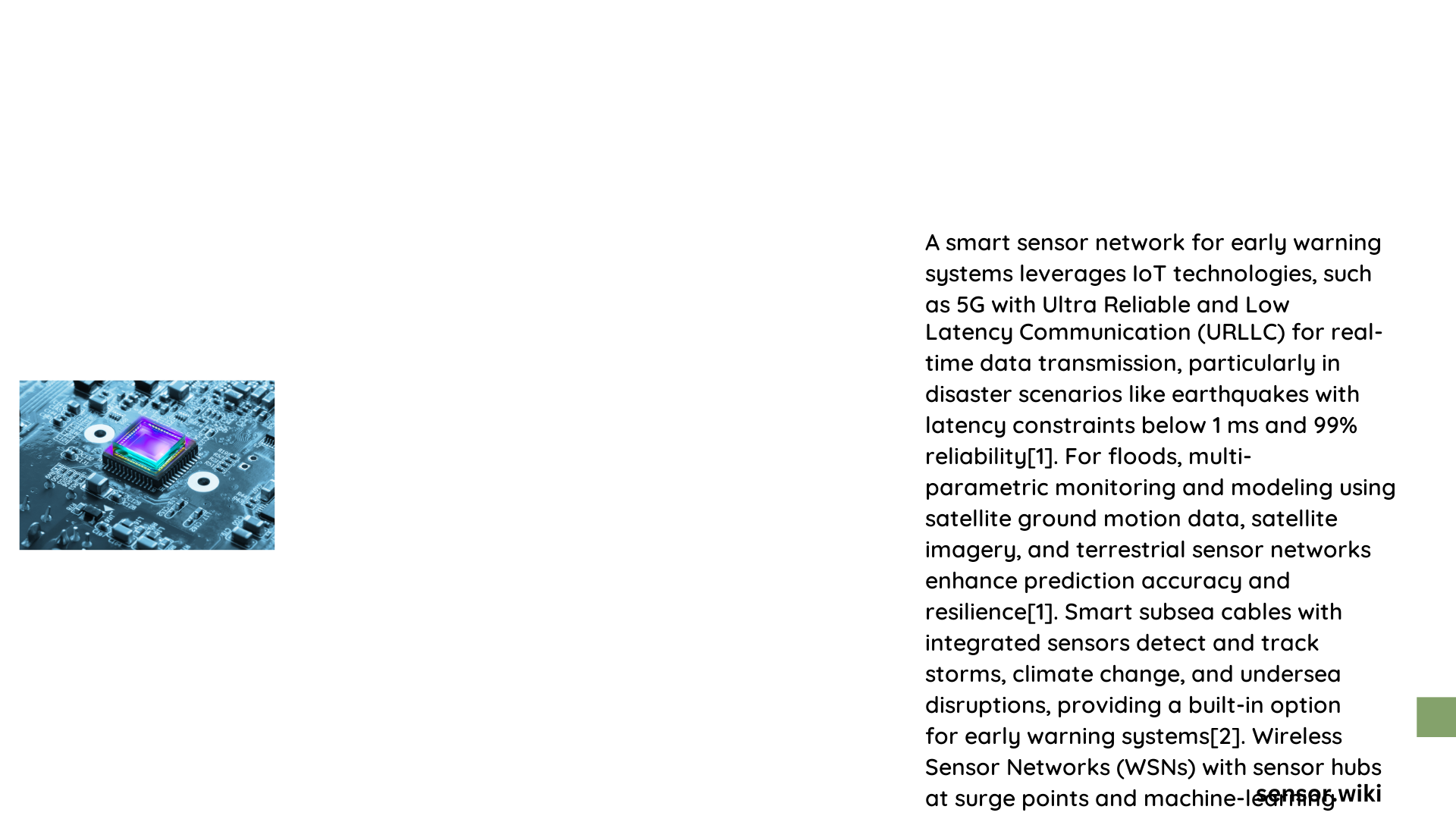Smart sensor networks represent a revolutionary approach to early warning systems, integrating advanced technological capabilities to detect, analyze, and respond to potential environmental and safety risks with unprecedented speed and accuracy. By leveraging interconnected sensors, edge computing, and sophisticated data analytics, these networks provide real-time monitoring across diverse domains, enabling proactive intervention and minimizing potential damage from natural disasters, environmental changes, and critical infrastructure threats.
What Are Smart Sensor Networks for Early Warning?
Smart sensor networks are sophisticated technological ecosystems designed to collect, process, and transmit critical environmental and situational data in real-time. These networks combine multiple sensor types, wireless communication technologies, and advanced computational algorithms to create comprehensive monitoring systems.
Key Components of Smart Sensor Networks
| Sensor Type | Primary Function | Typical Measurement Range |
|---|---|---|
| Rain Gauges | Precipitation Monitoring | 0-100 mm/hour |
| Temperature Sensors | Ambient Temperature Tracking | -40°C to 80°C |
| Air Quality Sensors | Pollutant Detection | 0-1000 μg/m³ |
| Pressure Sensors | Atmospheric Pressure Measurement | 300-1100 hPa |
How Do Smart Sensor Networks Detect Potential Risks?

Smart sensor networks employ multiple detection strategies:
- Real-Time Data Collection: Continuous monitoring of environmental parameters
- Edge Computing Analysis: Immediate local data processing
- Machine Learning Algorithms: Predictive risk assessment
- Wireless Communication: Rapid data transmission
What Technologies Enable Effective Early Warning Systems?
Several advanced technologies contribute to the effectiveness of smart sensor networks:
- Wireless Communication Protocols
- 5G networks
- Low-power wide-area networks (LPWAN)
-
Satellite communication systems
-
Advanced Sensor Technologies
- Miniaturized multi-parameter sensors
- High-precision measurement capabilities
-
Robust environmental resistance
-
Computational Intelligence
- Machine learning models
- Artificial intelligence algorithms
- Predictive analytics frameworks
What Challenges Do Smart Sensor Networks Address?
Smart sensor networks provide solutions for complex monitoring scenarios:
- Natural Disaster Prediction
- Wildfire detection
- Flood monitoring
-
Earthquake early warning
-
Environmental Monitoring
- Air quality tracking
- Climate change indicators
- Biodiversity preservation
What Are the Performance Metrics?
Performance evaluation of smart sensor networks involves multiple parameters:
- Detection Accuracy: 90-95% across various environmental conditions
- Response Time: Typically under 5 minutes for critical events
- Data Reliability: Consistent measurements within ±5-10% variance
What Future Developments Can We Expect?
Emerging trends in smart sensor networks include:
- Enhanced AI integration
- More energy-efficient sensor designs
- Increased network scalability
- Improved cross-domain interoperability
Practical Implementation Considerations
When deploying smart sensor networks, organizations must consider:
- Infrastructure Requirements
- Power Supply Strategies
- Data Management Protocols
- Maintenance and Calibration
Conclusion
Smart sensor networks represent a transformative technology for early warning systems, offering unprecedented capabilities in risk detection, environmental monitoring, and proactive management across multiple domains.
